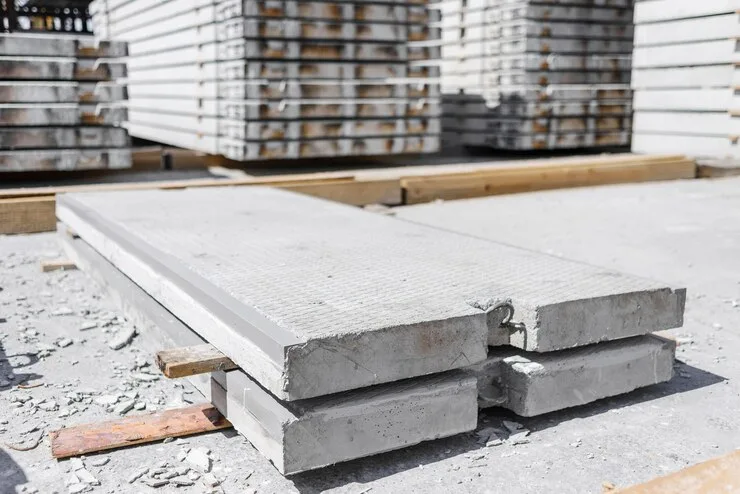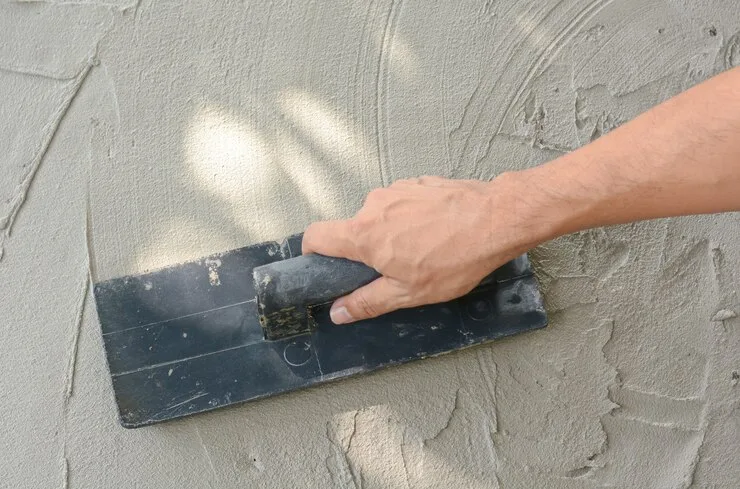
A concrete slab is a durable and long-lasting surface that can withstand heavy loads and harsh weather conditions. Whether it’s a driveway, patio, or foundation, proper maintenance and timely repairs are essential for maximizing the lifespan of your concrete slab. Neglecting maintenance can lead to costly repairs or even complete replacement. By understanding the importance of maintaining and repairing your concrete slab, you can ensure its longevity and save yourself from unnecessary expenses.
Regular maintenance is crucial to prevent small issues from escalating into major problems. Over time, concrete slabs can develop cracks, uneven surfaces, or become discolored. These issues not only affect the appearance but can also compromise the structural integrity of the slab. Moisture seepage through cracks can lead to erosion of the subbase, causing further damage. By addressing these issues promptly, you can prevent further deterioration and extend the lifespan of your concrete slab.
What are Concrete Slabs?
Concrete slabs are a fundamental structural element made of cast concrete. They serve as a flat, horizontal surface and are used as floors, ceilings, or the roofs on the top level of buildings. The thickness of a slab varies depending on its use, the loads it must bear, the conditions it needs to withstand, and the construction method employed. Typically, they are reinforced with steel bars (rebar) or mesh to increase their strength and prevent cracking.
Types of Concrete Slabs
There are several types of concrete slabs, each designed for specific needs and construction methods:
Solid Slabs
These are the simplest forms, consisting of a single layer of concrete. They are used where the load and span are moderate.
Ribbed or Waffle Slabs
These slabs have ribs running in one or two directions beneath them, which reduces the weight of the slab and increases its ability to bear heavy loads over larger spans.
Hollow-core Slabs
Pre-manufactured slabs with hollow sections run the length of the slab. They are lighter than solid slabs, making them easier to install and allowing for longer spans without the need for intermediate supports.
Post-tensioned Slabs

These slabs are cast with ducts through which cables are threaded. After the concrete has cured, the cables are tensioned and anchored at the ends, compressing the concrete and making it more resistant to tensile forces.
Concrete slabs are chosen for their durability, strength, and fire resistance. They are a common choice for residential, commercial, and industrial buildings due to their ability to provide a sturdy and level base, as well as their versatility in architectural applications.
Common issues with concrete slabs
Concrete slabs are exposed to various factors that can cause damage over time. Some of the common issues include:
- Cracks: Cracks can occur due to several reasons, such as shrinkage during the curing process, heavy loads, or soil settlement. Small cracks, if left unattended, can widen and lead to more severe structural problems.
- Spalling: Spalling refers to the chipping or flaking of the concrete surface. This can happen due to freeze-thaw cycles, exposure to chemicals, or poor quality concrete mix. Spalling not only affects the appearance but also weakens the surface.
- Settling or unevenness: Over time, the soil beneath the concrete slab can settle, leading to uneven surfaces. This can occur due to poor compaction during installation or changes in the soil moisture content. Uneven surfaces can pose safety hazards and should be addressed promptly.
- Discoloration: Concrete slabs can become discolored due to exposure to sunlight, chemicals, or stains. Discoloration not only affects the aesthetics but can also indicate underlying issues such as moisture infiltration.
Signs that your concrete slab needs maintenance or repair

Regular inspection of your concrete slab is essential to identify any signs of damage or deterioration. Some common signs that indicate the need for maintenance or repair include:
- Visible cracks: Cracks wider than 1/8 inch or those that are spreading should be addressed promptly. Pay attention to any vertical, diagonal, or zigzag cracks, as they can indicate structural issues.
- Uneven surfaces: If you notice any areas of the concrete slab that are uneven or sinking, it may be a sign of settling or soil erosion. Uneven surfaces can lead to tripping hazards and should be repaired.
- Spalling or chipping: If you observe any areas where the concrete surface is chipping or flaking, it indicates spalling. Spalled areas should be repaired to prevent further deterioration.
- Discoloration or stains: Dark spots, discoloration, or stains on the concrete surface can be signs of underlying moisture issues or chemical damage. These should be addressed to prevent further damage.
Basic maintenance tips for extending the lifespan of your concrete slab
Regular maintenance can significantly extend the lifespan of your concrete slab. Here are some basic tips to keep your concrete slab in good condition:
- Clean the surface regularly: Sweep or use a leaf blower to remove debris and dirt from the surface of your concrete slab. This prevents the accumulation of dirt and prevents it from seeping into the pores of the concrete.
- Avoid using harsh chemicals: When cleaning your concrete slab, use mild soap or a concrete-specific cleaner. Harsh chemicals can damage the surface and cause discoloration.
- Seal the concrete: Applying a concrete sealer helps protect the surface from moisture penetration, stains, and UV damage. It also enhances the appearance and makes cleaning easier.
- Prevent moisture accumulation: Ensure proper drainage around your concrete slab to prevent water from pooling. Standing water can lead to erosion and damage the subbase.
- Avoid heavy loads: Do not place heavy objects or equipment directly on the concrete slab. This can cause stress and lead to cracking or damage.
How to properly clean and seal your concrete slab

Cleaning and sealing your concrete slab is an essential part of its maintenance. Follow these steps to properly clean and seal your concrete slab:
- Remove any debris: Sweep or use a leaf blower to remove leaves, dirt, and other debris from the surface of the concrete slab.
- Prepare the cleaning solution: Mix mild soap or a concrete cleaner with water according to the manufacturer’s instructions.
- Scrub the surface: Use a stiff brush or broom to scrub the concrete slab with the cleaning solution. Watch out for any spots or changes in color.
- Rinse thoroughly: Use a hose or pressure washer to rinse off the cleaning solution from the concrete slab. Make sure all the soap residue is removed.
- Allow the surface to dry completely: Let the concrete slab dry for at least 24 to 48 hours before applying the sealer.
- Apply the concrete sealer: Choose a high-quality concrete sealer and follow the manufacturer’s instructions for application. Use a roller or sprayer to evenly coat the surface of the concrete slab. Allow the sealer to dry completely before using the slab.
DIY concrete slab repair techniques
Minor cracks and spalling can be repaired using simple DIY techniques. Here are some common methods for repairing concrete slabs:
- Crack injection: For narrow cracks, use a concrete crack filler or epoxy injection system. Follow the manufacturer’s instructions for application. This method helps prevent further spread of the crack and restores the structural integrity.
- Patching compound: For small areas of spalling or chipping, use a patching compound. Clean the damaged area thoroughly, apply the compound, and smooth it with a trowel. Allow it to dry completely before using the slab.
- Resurfacing: If your concrete slab has extensive spalling or surface damage, consider resurfacing. This involves applying a thin layer of concrete or a specialized resurfacing product to the existing slab. Resurfacing restores the appearance and structural integrity of the slab.
Hiring a professional for concrete slab maintenance and repair
While some concrete slab repairs can be done DIY, complex issues require the expertise of a professional. Hiring a professional for concrete slab maintenance and repair ensures proper diagnosis and long-lasting solutions. Professionals have the necessary tools, knowledge, and experience to handle a wide range of concrete slab issues. They can assess the extent of the damage, recommend the most suitable repair method, and ensure the work is done efficiently and effectively.
The cost of concrete slab maintenance and repair
The cost of concrete slab maintenance and repair varies depending on the extent of the damage and the repair method used. DIY repairs are generally more cost-effective but may not be suitable for extensive damage. Hiring a professional can be more expensive but ensures quality workmanship and long-term durability. It is advisable to get multiple quotes from reputable contractors to compare the cost and services offered. Investing in regular maintenance and timely repairs can save you from costly replacements in the future.
Preventive measures to avoid future damage to your concrete slab

In addition to regular maintenance and timely repairs, taking preventive measures can help avoid future damage to your concrete slab. Here are some preventive measures you can take:
- Avoid using de-icing chemicals: Chemicals used for de-icing can damage the surface of your concrete slab. Instead, use sand or other non-corrosive materials to improve traction during winter.
- Provide proper drainage: Ensure that water is directed away from your concrete slab. Poor drainage can lead to water pooling and damage to the subbase.
- Avoid heavy traffic: Limit heavy vehicle traffic on your concrete slab, especially if it is not designed for heavy loads. Excessive weight can cause cracking and damage.
- Protect the surface: Use protective mats or pads under heavy objects or equipment placed on the concrete slab. This helps distribute the weight and prevent stress points.
- Regular inspections: Conduct regular inspections of your concrete slab to identify any signs of damage or deterioration. Take care of any problems right away to stop more damage.
Conclusion
Maintaining and repairing your concrete slab is vital for its longevity and structural integrity. By addressing small issues promptly, conducting regular inspections, and following proper maintenance techniques, you can maximize the lifespan of your concrete slab. While some repairs can be done DIY, it is advisable to consult a professional for complex issues to ensure quality and long-lasting solutions. Investing in preventive measures and timely repairs can save you from costly replacements in the future. Take care of your concrete slab, and it will serve you well for years to come.
For professional concrete slab maintenance and repair services, contact Rhino Concrete Lafayette. Our team of experts ensures top-quality workmanship and customer satisfaction. Don’t wait until it’s too late – protect your investment and extend the lifespan of your concrete slab.







